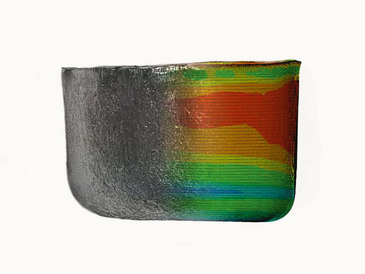After the maximum funding period of 12 years, the term of the Collaborative Research Center (CRC) 747 “Micro Cold Forming” at the University of Bremen came to an end on December 31, 2018.
The scientists of the CRC were very successful in researching the principles of the mass production of microcomponents. For the common goal, more than 60 experts conducted research as part of 17 basic and four technology transfer projects. The latter were realized together with industry partners.
Small, smaller, micro: components are getting tinier. Often they are just the size of a grain of rice. These small dimensions today enable high-performance applications that were unthinkable of just a few years ago. In cars, smartphones, hearing aids, watches, and countless other devices, millions of microcomponents are installed every day. They do the same work that used to require matchbox-sized components. But the small parts also present completely new challenges, for example in their manufacture and processing. How can the smallest metallic components be manufactured and formed quickly and cost-effectively in mass production – so reliably and precisely that they subsequently function smoothly even under the highest stress?
New Approaches for Mass Production Developed
The Collaborative Research Center 747 “Micro Cold Forming” at the University of Bremen has been dealing with this question for 12 years. “In a nutshell, we were interested in researching reliable processes and methods for the forming of metallic microcomponents in mass production,” says Professor Frank Vollertsen, spokesperson of CRC 747. “New challenges always arise in mechanical manufacturing. Due to miniaturization and ever shorter process cycles, conventional manufacturing processes are reaching their physical limits. In the CRC, we have researched the causes for these limits and developed new approaches for the systematic design and safe use of forming processes for metallic microcomponents.”
However, the Collaborative Research Center was not only concerned with forming processes. The complete process chain from material development and the upstream and downstream process steps right through to planning aspects was considered. An industrial working group monitored the research from the very beginning. Especially in the last project phase from 2014 to 2018, the focus was on putting the research results into practice. In addition to four concrete technology transfer projects, the desired proximity to industry over the years has led to further forms of exchange and cooperation. The work of the CRC also ensured close cooperation within the University of Bremen, in particular between production engineering, physics, and mathematics.
Progress through Material Accumulation and Rotary Swaging
The work of the Bremen CRC has led to a great deal of progress. One example is the so-called accumulation of material. While in the macro range, metal is often compressed in several steps during cold forming in order to obtain a certain shape, whereas in the micro range, forming processes can only be realized in two steps due to certain physical effects. “If, for example, the end of a clamped wire is heated by a laser beam, the molten material forms a sphere – the so-called mass predistribution,” explains the CRC speaker. “This spherical mass can now be further processed, for example by rotary swaging. This rotary swaging has also been one of our main research focuses.” Among other things, the process makes it possible to change the small metal sphere from the material accumulation precisely and without any waste. The metal can be strengthened further and thus made even more robust. It can also be used to produce combinations of different materials.
Another example is the fast and precise quality testing of microcomponents that the CRC has made possible by using digital holography. A component is illuminated with a part of the laser light. The reflected light is superimposed with the originally emitted part of the laser light. “We get meaningful 3-D information about the component in good image quality and within a very fast measuring time,” says Frank Vollertsen. The analysis is carried out by image processing and artificial intelligence. “Within fractions of a second, it must be assessed whether a tiny component meets the quality standards or is simply waste. With the process we have developed, this is possible today.”
New Processes for Tool Manufacture and Processing
Another important area of CRC research was the development of new manufacturing and processing methods for tools made of special materials such as diamond or particularly temperature-sensitive materials such as shape-memory alloys. With the “mikromal” public project, which presented the activities of the Collaborative Research Center in an understandable way for many years and often visited schools, the CRC was one of the first to launch this form of knowledge transfer and the promotion of young talent.
“We have built up considerable expertise over the past 12 years. Of course, our work will not stop with the end of the Collaborative Research Center,” Frank Vollertsen sums up. In terms of process design for forming processes and in tool manufacture, further research is being carried out in the Faculty of Production Engineering and at the university institutes, and products such as the prototype developed in the CRC for testing technology in cavities for the final inspection of microcomponents are being made ready for the market.
Additional Information:
www.sfb747.uni-bremen.de
www.mikromal.de
https://www.facebook.com/Sonderforschungsbereich747
www.bias.de
www.uni-bremen.de
Contact:
Christine Steffens
CRC 747 “Micro Cold Forming”
University of Bremen
Phone: +49 421 218-58130
E-mail: steffensprotect me ?!biasprotect me ?!.de


